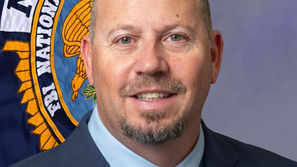Opinion: HSR update — it just gets worse
- Jim Glynn
- May 28, 2022
- 3 min read
Fourteen years ago, Californians were sold a bottle of snake oil for $10 billion. It was called high-speed rail, and it was supposed to connect San Francisco to Los Angeles along an electrified track in about 3 hours. At the time, it was advertised as being “state of the art.” In reality it was, at best, old hat. And the projected cost now exceeds $100 million.
Randal O’Toole of the Cato Institute wrote that California’s attempt to be the premier example in high-speed rail was “like wanting to be the world leader in electric typewriters, rotary telephones, or steam locomotives.” At the time, Japan’s Shinkansen high-speed rail had been in service since 1964 and France’s “tres grande vitesse” (English, “very high speed”) or TGV had been operating since 1981.
It’s now 2022, and the only ways by which people can get from S.F. to L.A. are by car, bus, or plane. Japan has been relying on HSR for 58 years. Today, in addition to Japan and France, many other countries have high-speed rail systems, including Austria, Belgium, China, Germany, Italy, Poland, Portugal, Russia, South Korea, Spain, Sweden, Taiwan, and Turkey.
Old technology
Trains are 19th century transportation. If and when California starts operating HSR, it will be “old” 20th century technology. However, high-speed trains can be effective and commercially profitable if they connect densely-populated metropolitan areas that are separated by about 300 miles. This is the case in Japan’s Tokyo-to-Okaka line. The two metropolitan areas contain more than one-third of the nation’s total population. By 1975, the line was transporting one billion people per year. It has had a ridership of 100 billion since then. In France, Paris and Lyon are the two most populous metropolises, and they are also separated by roughly 300 miles.
If these are the models for success, then California’s current plan for HSR is doomed to failure. As the 2022 Environmental Status Map shows, the section of the state’s HSR that will supposedly start operation in 2029 runs from Merced to Bakersfield, neither of which is a “densely-populated metropolitan area.” The map also shows a wye, which is penciled in to be built in Chowchilla. From there track will run through Los Banos to Gilroy and then turn north to San Jose. No date seems to have been set for this phase of the project.
Then, perhaps, the track will wind its way through Silicon Valley to San Francisco. But the problem there is that the S.F. megalopolis is an area that includes the populations from San Jose into Marin County and across the San Francisco Bay to Oakland and the East-Bay cities. That does not fit the definition of a “densely-populated” metropolitan area.
… and the future?
As far as I have been able to determine, there is no set plan for the proposed route from Bakersfield to Palmdale. Where? If you think that Bakersfield is the place where snakes go to die, visit Palmdale sometime. Then, perhaps around the time that your grandchildren are about to retire, track will be laid from Palmdale to Burbank, and thence to Los Angeles, Norwalk, Fullerton, and Anaheim. (By the way, our descendants who go all the way to Anaheim can drop by Disneyland and take a ride on the antique monorail, just for fun.)
And where is Madera in this mix? I’m not certain. After spending many hours poring over reports and news stories, it seems to me that Madera might have an HSR station. That could be in the area of Avenue 12, where nobody lives. Or it may be a “stop” where people can transfer to Amtrak which will provide transportation to “local communities.” Or, the station may be at Avenue 19. And, wherever and whatever it is, it will “not be as elaborate” as the stations in Fresno or Merced.
As usual, it seems that Madera will be left behind. Perhaps if we used some of the state’s “beautification” money to improve South Gateway Drive, where northbound visitors enter our city, businesses would be more likely to locate here. Of course, such a decision would require enlightened local leadership.
• • •
Jim Glynn is Professor Emeritus of Sociology. He may be contacted at j_glynn@att.net.


























Comments